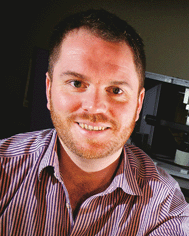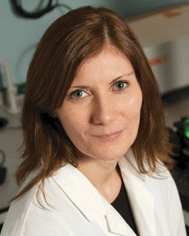Fundamental developments in clinical infrared and Raman spectroscopy
Matthew J.
Baker
* and
Karen
Faulds
*
Department of Pure and Applied Chemistry, University of Strathclyde, Technology and Innovation Centre, 99 George Street, Glasgow, G1 1RD, UK. E-mail: matthew.baker@strath.ac.uk; karen.faulds@strath.ac.uk; Web: http://twitter.com/chemistrybaker
This special issue on fundamental developments in clinical infrared (IR) and Raman spectroscopy is focussed on the use of vibrational spectroscopy to gain biomedical insights into clinically relevant problems. It includes highlights on novel developments in methodologies and technologies as well as discussing potential ways to overcome barriers to the clinical implementation of promising vibrational spectroscopic techniques.
IR and Raman spectroscopy are sensitive to biochemical markers of disease from a range of biomedical samples. The versatility of these vibrational techniques means that tailored analysis can be developed based on the clinical requirement, be it specific and highly sensitive target molecule detection or a signature based approach in an attempt to understand the complexity of disease profiles for diagnosis. Vibrational spectroscopic techniques are generally easy to use, robust, and rely upon simple sample preparation, and the instrumentation can be configured to the application (e.g. probe based, hand held, imaging). These advantages, combined with the fact that they are capable of highly sensitive and specific discrimination of disease from non-disease and in some cases, disease severity, mean they are medically applicable and suitable for the clinical environment.
Over recent years the application of IR and Raman spectroscopy to clinical problems has progressed rapidly, not only in highlighting the potential of spectroscopy to provide objective information to aid clinical decision making, but also in developing our fundamental understanding of how light interacts with matter. A Web of Science citation report based on a search for “FTIR” and “Clinical” publications over the period 2000–2015 shows an increase from 310 citations per year in 2000 to 5857 in 2015, and for “Raman” and “Clinical” there is an increase from 288 citations per year to 11![[thin space (1/6-em)]](https://www.rsc.org/images/entities/char_2009.gif) 218 over the same period. This special issue focuses on the fundamental developments that are driving this field ever closer to the clinic.
218 over the same period. This special issue focuses on the fundamental developments that are driving this field ever closer to the clinic.
The analysis of vibrational data obtained from biological samples is crucial for reliable and accurate interpretation of the significance of the data. Byrne et al. (DOI: 10.1039/c5cs00440c) discuss the conditions and methods that can be used to process infrared and Raman spectral data that take into account differing instrumental and sample preparation factors to extract accurate data from the often subtle spectral changes due to biochemical changes in the sample.
Umapathy et al. (DOI: 10.1039/c5cs00540j) then go on to discuss the quantification of vibrational data which can often be hampered by the challenging background signals often observed in biological samples as well as the sample presentation affecting the quality of the resulting data. The focus of this article is on the use of ratiometric methods to overcome these issues to allow quantitative data to be generated.
To extend the use of Raman techniques into clinical and in vivo settings will require the development of advanced instrumentation and techniques. Stone et al. (DOI: 10.1039/c5cs00850f) discuss the requirements for the development of fibre optic Raman probes for use in vivo. The focus is on the design of fibre optic probes to ensure that the materials and design are compatible with both Raman scattering and the in vivo environment.
Popp et al. (DOI: 10.1039/c5cs00564g) focus on the use of Raman and stimulated Raman imaging techniques applied to biomedical samples. The article focusses on the instrumental developments in this area and the different instrumental set ups used to allow high information content imaging using spot, line and wide field imaging approaches.
Many clinical problems require optical data to be obtained at depth whilst being as non-invasive as possible to the patient. Recent developments in Raman for biomedical application include the use of transmission and spatially offset Raman (SORS) which allows signals to be obtained from the subsurface of tissue. Matousek and Stone (DOI: 10.1039/c5cs00466g) review the potential of these techniques for biomedical applications such as cancer diagnosis, evaluation of bone structure and glucose monitoring.
Surface enhanced Raman scattering (SERS) is an advanced Raman technique which uses a roughened metal surface to enhance the intrinsically weak Raman signal. The molecular specificity and sensitivity of SERS make it ideal for the simultaneous detection of multiple biomolecules in clinically relevant samples. Faulds et al. (DOI: 10.1039/c5cs00644a) review the recent literature on the use of SERS for the multiplexed detection of DNA and protein biomarkers in vitro.
Wood (DOI: 10.1039/c5cs00511f) discusses the contribution Fourier transform infrared spectroscopy has made to the understanding of DNA confirmation with a particular focus on the DNA hydration/structure relationship and its role in clinical diagnostics. The advantages for biomedical spectroscopy of analysing hydrated B-DNA, namely improved quantification in cells, improved discrimination and reproducibility of FTIR spectra during the cell cycle and insights into biological significance are highlighted.
Biofluid spectroscopy, either serum or plasma or an organ specific fluid, offers possibilities for relatively non-invasive diagnostic/monitoring in healthcare applications which is capable of rapid and reproducible diagnostics. Sockalingum et al. (DOI: 10.1039/c5cs00585j) underscore recent research within the field of biofluid spectroscopy, highlighting recent advances as well as issues surrounding future clinical translation.
Histopathology is fundamental to modern day clinical practice and disease diagnosis and is currently performed via the use of optical microscopy combined with a suite of stains depending upon the molecular feature desired to be visualised. In their review Gardner et al. (DOI: 10.1039/c5cs00846h) focus on the development and use of chemical imaging techniques, with a focus on recent advances in infrared imaging, for the development of spectral histopathology (SHP) and consider future barriers to clinical implementation.
FTIR spectroscopic imaging is a rapid, label-free, non-destructive and molecularly specific technique that can be applied to a wide range of biomedical applications. A promising future application is its use in live cell analysis, and in their review Kazarian et al. (DOI: 10.1039/c5cs00515a) focus on the use of the attenuated total reflection (ATR) sampling mode for live cell analysis highlighting particular developments in imaging technology and particular advantages of ATR imaging.
The translation of spectroscopic equipment into the clinic or into medical use is of upmost importance for the future of biomedical vibrational spectroscopy. Mahadevan-Jansen et al. (DOI: 10.1039/c5cs00581g) discuss the development of spectroscopic clinical instrumentation, focusing on Raman spectroscopy, reviewing the various considerations relevant to the implementation of Raman spectroscopy within the clinic and a focused set of applications that have demonstrated the successful use of Raman in in vivo studies.
| This journal is © The Royal Society of Chemistry 2016 |


